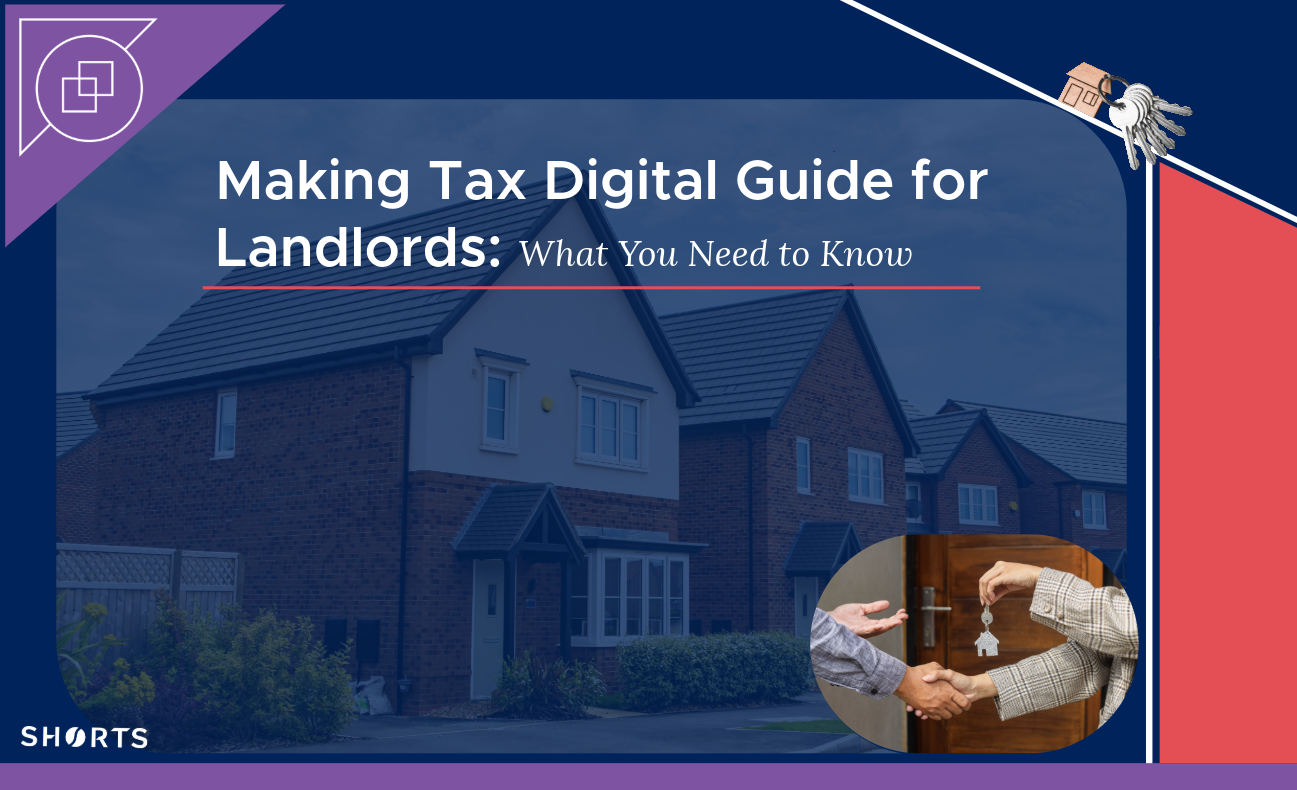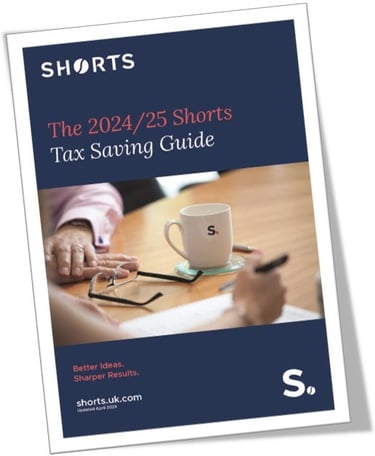
The UK tax system is undergoing a significant transformation, and landlords must be prepared. Making Tax Digital for Income Tax Self-Assessment (MTD for ITSA) will revolutionise how property income is reported to HMRC. Whether you own a single rental property or manage a portfolio, this guide will help you understand what’s changing, when it’s happening, and how to stay compliant.
Making Tax Digital (MTD) for Income Tax Self-Assessment (ITSA) overview
MTD is HMRC’s initiative to digitalise the UK tax system by requiring digital record-keeping and more frequent reporting. The goal is to reduce errors, improve efficiency, and provide a clearer picture of your tax obligations throughout the year.
For landlords, this means:
-
Digital record-keeping of rental income and expenses.
-
Quarterly updates to HMRC via MTD-compatible software.
-
An End of Period Statement (EOPS) confirming final property figures and making any necessary adjustments.
-
A Final Declaration at year-end to confirm your total income and tax liability.
Timeline for MTD for income tax for landlords
MTD for ITSA is being rolled out in phases based on gross income thresholds (before expenses):
-
From April 2026: Landlords with income over £50,000
-
From April 2027: Income over £30,000
-
From April 2028: Income over £20,000
This includes income from both property and self-employment. If you jointly own property, your share of the income is considered individually.
What info does HMRC want from landlords?
Keep digital records
Under MTD for ITSA, landlords must maintain digital records of their property income and expenses. This is a key requirement for compliance with HMRC’s new digital tax system.
Landlords need to digitally record the following information for each property business they operate:
-
Rental income; this includes all rent received from tenants
-
Allowable expenses: such as repairs, maintenance, letting agent fees, insurance, and utility bills
-
Property details, including: addresses and whether the property is jointly owned
-
Dates and amounts of income and expenses, recorded as close to the transaction date as possible
-
Digital copies of receipts and invoices, where applicable
Use HMRC-approved software
While spreadsheets can still be used in conjunction with bridging software, paper records alone are no longer compliant under MTD for ITSA. HMRC requires a digital link between the records and the final submission to ensure accuracy and reduce errors.
If you currently keep records on paper or in basic spreadsheets:
-
You must transition to digital record-keeping using MTD-compliant software.
-
If using spreadsheets, you’ll need bridging software to digitally link your data to HMRC’s systems.
-
Consider migrating your data into a fully integrated MTD solution to streamline the process and reduce the risk of non-compliance.
Submit quarterly updates and final declarations
Under MTD, landlords must submit:
1. Quarterly updates – summarising income and expenses for each property business.
- Due 7 August (for 6 April – 5 July quarter)
- Due 7 November (for 6 July – 5 October quarter)
- Due 7 February (for 6 October – 5 January quarter)
- Due 7 May (for 6 January – 5 April quarter)
Please note: an election can be made for quarters to run to calendar months i.e. June, September, December and March
2. End of Period Statement (EOPS) – submitted after the tax year ends, confirming final property figures and making any necessary adjustments.
3. Final declaration – confirming all income for the year, including non-property income e.g., bank interest, employment income, etc, and calculating the final tax liability.
- a. due by 31 January following the end of the tax year
- b. replaces the current annual Self-Assessment tax return
What happens if you don’t comply?
If you miss a deadline or submit incorrect information, you could face myriad punishments:
-
Penalty points: Each missed submission earns one penalty point.
-
Financial penalties: Once you reach a threshold (e.g., 4 points for quarterly submissions), you’ll be fined £200. An additional £200 fine applies for every subsequent late submission while over the threshold.
-
Late payment penalties: If you don’t pay your tax on time, you may incur interest and further penalties, depending on how late the payment is.
-
Record-keeping penalties: Not maintaining digital records to the requirements can also lead to fines.
This system is designed to be fairer, penalising persistent non-compliance rather than occasional mistakes. However, repeated failures will quickly add up to significant costs.
Non-compliance can also lead to:
-
Increased risk of HMRC investigations due to irregular or missing data.
-
Cash flow issues from unexpected fines or interest charges.
-
Administrative burden if you need to correct multiple errors or catch up on missed submissions.
-
Loss of control over your finances, especially if you’re managing multiple properties or income streams.
What about landlords with multiple income streams?
Many landlords don’t just earn income from property; they may also have self-employment income, PAYE employment, investment income, or overseas properties. Under MTD for ITSA, landlords with multiple income streams must take extra care to stay compliant.
1. Track each income stream separately.
HMRC requires digital records for each distinct business or property income source. For example:
- Rental income from UK properties
- Rental income from overseas properties
- Self-employment income
- Other business income
2. Each income stream must be recorded digitally using MTD-compatible software.
3. You’ll need to send separate quarterly updates to HMRC for each qualifying income stream.
4. After the tax year ends, you must submit an EOPS for each income source, confirming the final figures and making any necessary adjustments.
5. You must then submit a single Final Declaration. This combines all income sources (including employment, pensions, dividends, etc.) and calculates your final tax liability.
Many software platforms are designed for single income streams. Landlords with complex finances may need to use multiple software tools or bridging software to meet MTD requirements.
Avoid mixing personal and business transactions; use separate bank accounts where possible to simplify record-keeping.
If you co-own properties, ensure your software can handle split ownership and allocate income/expenses accordingly.
What if a landlord is already compliant with MTD for VAT?
If you’re a landlord already complying with MTD for VAT, you’re off to a good start, but MTD for ITSA introduces additional requirements. It’s important to understand the differences and what extra steps are needed to stay compliant with both regimes.
Key differences between MTD for VAT and MTD for ITSA
|
MTD VAT |
MTD ITSA |
|
|
Who it applies to |
All VAT-registered businesses |
Landlords and self-employed individuals with income over £50,000 (from April 2026) |
|
Frequency of submissions |
Quarterly VAT returns |
Quarterly updates plus EOPS and Final Declaration |
|
Types of income |
VAT-related business income only |
All property and self-employment income |
|
Software requirements |
MTD-compatible VAT software |
MTD-compatible ITSA software (may differ from VAT software) |
These are key steps landlords should take to stay compliant for both:
1. Check your software compatibility, as not all MTD for VAT software supports MTD for ITSA.
2. Keep distinct digital records for VAT and income tax.
3. Plan for additional admin; you may need to adjust your processes or seek help to manage the increased workload.
If I sell a property, does HMRC allocate it towards my yearly income?
HMRC does not treat the proceeds from selling a property as part of your annual income for MTD for ITSA. Instead, profits from the sale of a property are subject to Capital Gains Tax (CGT).
When you sell a property that is not your main residence, the capital gain is the difference between the sale price and the original purchase price (after deducting allowable costs).
You must report the sale and pay any CGT liability to HMRC within 60 days of completion using the CGT on UK property service. The gain must also be included in your Final Declaration (or Self-Assessment tax return if you are not within MTD for ITSA).
If the property was your main residence, you may qualify for Private Residence Relief, which can reduce your CGT liability.
Landlord exceptions for MTD for income tax
MTD for ITSA is being introduced in stages based on total gross income.
You may apply for an exemption if it’s not reasonably practical for you to use digital tools due to:
-
Age or disability
-
Remote location with no reliable internet access
-
Religious beliefs that prevent the use of technology
These are assessed case-by-case by HMRC, and you’ll need to provide supporting evidence.
If you co-own a property, a temporary easement allows one owner to:
-
Keep digital records for the property
-
Share summary updates with the other owner(s)
This reduces the burden of duplicate record-keeping for jointly owned properties.
MTD ITSA challenges for landlords
Many landlords, especially those with smaller portfolios, are concerned about the cost of MTD-compliant software. Unlike traditional spreadsheets or paper records, these tools often come with monthly or annual subscription fees.
We recommend the following tips to keep costs down:
-
Look for free or low-cost MTD software options recognised by HMRC.
-
Some providers offer discounts for early adopters or bundled services through accountants.
-
Consider the long-term value; digital tools can save time, reduce errors, and help avoid penalties.
Keeping digital records, submitting quarterly updates, and managing year-end declarations can feel like a significant time burden, especially for landlords who manage properties alongside other work.
There are simple steps landlords can take to keep business admin for MTD ITSA to a minimum:
-
Set up automated bank feeds and receipt capture tools to reduce manual entry.
-
Use software that integrates with your letting agent or property management system.
-
Outsource to an accountant who can manage submissions on your behalf and ensure everything is filed correctly and on time.
Top tips to help landlords prepare for MTD ITSA
Here are some simple steps to help you prepare:
-
Add up your total gross income from property and self-employment. If it exceeds £50,000, you’ll be required to comply from April 2026.
-
Your accountant can help you choose an MTD-compliant solution that suits your property setup and budget.
-
Begin using digital tools now to get familiar with the process and identify any gaps in your current system.
-
Stay informed by subscribing to HMRC updates or asking your accountant to keep you in the loop.
-
Use apps or software features to scan and store documents.
-
Block out time monthly or quarterly to update your records.
Embrace MTD for Income Tax now
MTD for ITSA is a significant shift, but with the right tools and support, it’s entirely manageable. The key is to start now, whether you manage one property or a portfolio, preparing early gives you time to test software, streamline your processes, and get comfortable with digital recordkeeping.
The team at Shorts is here to guide you through every step of the MTD journey, from choosing the right software to managing your submissions. Get in touch today to make MTD work for you.

Steven Strawther
I deal with all aspects of personal tax compliance and since joining Shorts I have gained valuable experience in private client advisory and planning opportunities. I have been instrumental in refining the personal tax compliance process and implementing digital solutions to provide clients with an efficient personal tax service.
View my articlesTags: MTD ITSA


